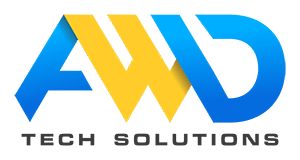A technology stack, often referred to as a tech stack, is a combination of programming languages, frameworks, libraries, databases, and other tools that developers use to build software applications. The choice of a technology stack is a crucial decision in the development process, and the significance of technology stacks in web and app development lies in several key areas:
Efficiency and Speed are the core Significance of Technology Stacks in Web and App Development:
The right technology stack can significantly impact development efficiency and speed. Well-established frameworks and libraries provide pre-built modules and components, allowing developers to focus on application-specific logic rather than building everything from scratch.
Scalability:
Scalability is a critical consideration as applications grow and user demands increase. A well-chosen technology stack provides the flexibility to scale applications horizontally or vertically, ensuring they can handle increased loads without compromising performance.
Cross-Platform Compatibility:
The choice of a technology stack influences the ability to develop applications that work seamlessly across multiple platforms. Whether it’s a web application accessed through browsers or a mobile app running on different devices and operating systems, the technology stack plays a vital role in ensuring compatibility.
Maintainability and Upgradability:
A well-structured technology stack contributes to the maintainability of the codebase. When updates or enhancements are required, a modular and organized stack allows for easier modifications without disrupting the entire system. This is crucial for long-term sustainability and reducing technical debt.
Community Support and Documentation:
The strength of the developer community behind a technology stack is a significant factor. Robust stacks often have active communities that contribute to open-source projects, provide support, and offer extensive documentation. This support ensures that developers can find solutions to challenges and stay updated on best practices.
Security:
Security is a top priority in software development. The technology stack influences the security measures that can be implemented. Choosing secure frameworks, libraries, and tools and staying informed about potential vulnerabilities is essential to building robust and secure applications.
Cost-Effectiveness:
The cost of development is influenced by the choice of technology stack. Some technologies are open-source and have no licensing fees, while others may require investment. Additionally, factors such as development time and maintenance costs contribute to the overall economic considerations.
User Experience:
The technology stack affects the user experience directly. Performance, responsiveness, and the ability to leverage modern design and interaction patterns are influenced by the technologies used. A well-optimized stack contributes to a positive user experience.
Integration Capabilities:
Modern applications often need to integrate with various third-party services, APIs, or other systems. The compatibility and integration capabilities of the chosen technology stack determine how smoothly these integrations can be implemented.
Adaptability to Project Requirements:
Different projects have different requirements. The flexibility of the chosen technology stack to adapt to project-specific needs, whether it’s data handling, real-time features, or specific functionalities, is crucial for successful project delivery.
In summary, choosing a technology stack is a strategic decision that impacts every aspect of the development process and the resulting application. It’s essential to align the stack with the project’s goals, scalability needs, and long-term vision to ensure a successful and sustainable outcome. So check out what we offer in our web and app development services or follow us on our LinkedIn page.


